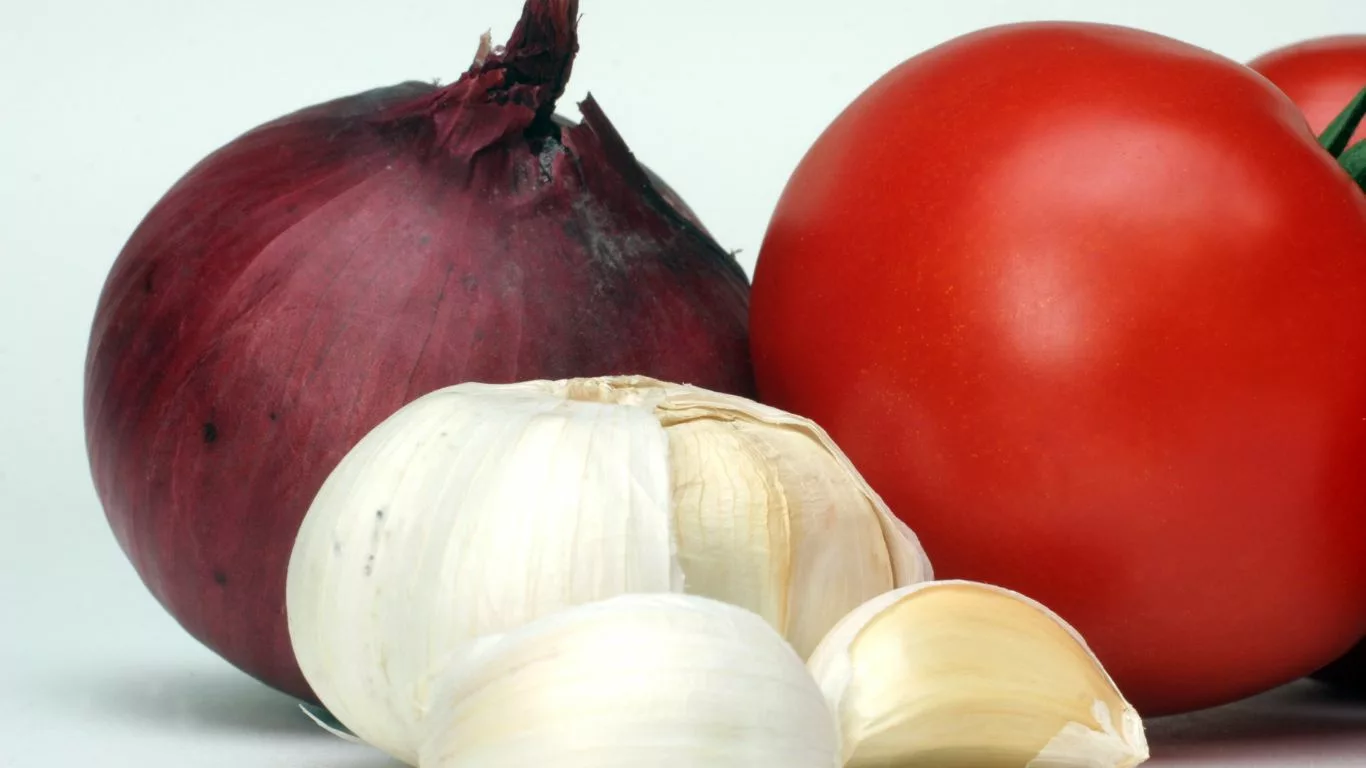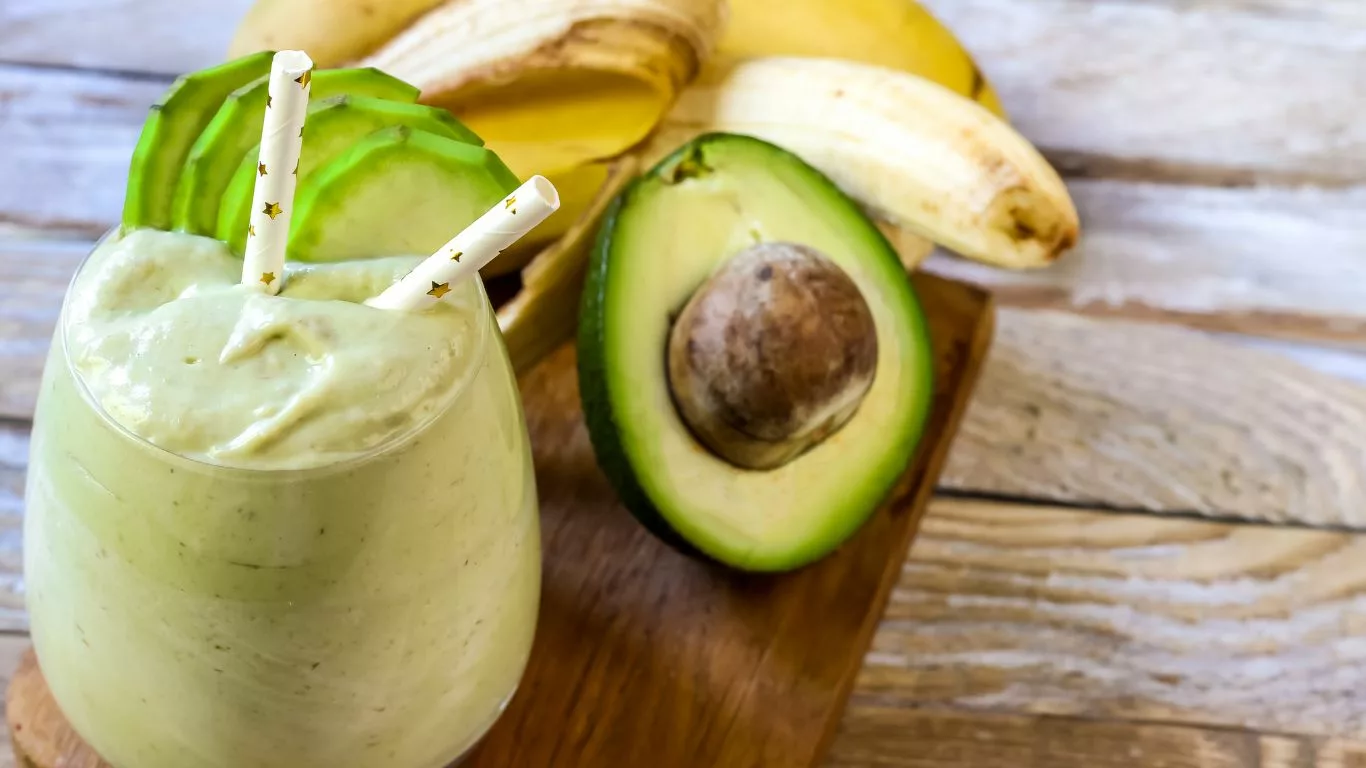Dietary Recommendations and Restrictions for Acid Reflux
Understand the link between weight and acid reflux, and explore safe weight loss strategies to alleviate symptoms. Prioritize overall health and well-being with expert guidance.
Acid reflux, also known as gastroesophageal reflux (GER), is a common digestive disorder that occurs when stomach acid flows back into the esophagus. This backward flow of stomach acid can cause irritation and inflammation of the esophagus, leading to uncomfortable symptoms such as heartburn, regurgitation, and chest pain. While medical treatments can provide relief, making dietary changes is essential for managing acid reflux symptoms effectively and improving overall digestive health.
Foods to Avoid with Acid Reflux
Identifying and avoiding trigger foods is crucial for minimizing acid reflux symptoms. Certain foods can relax the lower esophageal sphincter (LES), the muscle that acts as a valve between the stomach and the esophagus, allowing stomach acid to flow back up. Here are some common foods to avoid:
High-Fat and Fried Foods
A study published in the Journal of Gastroenterology and Hepatology found that high-fat meals delay gastric emptying, which can increase the risk of acid reflux. Additionally, high-fat foods can stimulate the production of more stomach acid, further exacerbating symptoms. Avoid fried foods, fatty cuts of meat, and full-fat dairy products.
Spicy and Acidic Foods
Spicy foods containing chili peppers and acidic foods like tomatoes and citrus fruits can irritate the esophageal lining, leading to heartburn and regurgitation. According to a study published in the Journal of Neurogastroenterology and Motility, consuming a meal high in chili pepper significantly increased the number of acid reflux events in individuals with GERD. Opt for milder seasonings and non-citrus fruits like bananas and melons.
Citrus Fruits and Juices
Citrus fruits are highly acidic, and their consumption can trigger acid reflux symptoms in many individuals. Research published in the journal Gut and Liver suggests that acidic fruits can weaken the LES and increase the risk of acid reflux. Replace citrus fruits and juices with low-acid options like apples, pears, and berries.

Onions, Garlic, and Tomatoes
Onions and garlic contain fermentable fibers and can cause gas and bloating, which can exacerbate acid reflux symptoms. Additionally, tomatoes are highly acidic and may relax the LES. A study published in the Journal of Food Science found that onions and garlic significantly increased the number of acid reflux episodes in GERD patients. Opt for alternative flavorings like herbs and mild spices to season your dishes.
Chocolate and Caffeine-Containing Beverages
Chocolate contains compounds, such as theobromine, that can relax the LES, allowing stomach acid to flow back into the esophagus. Similarly, caffeine, found in coffee, tea, and some sodas, can also relax the LES and increase the risk of acid reflux. Limit your consumption of chocolate and opt for decaffeinated beverages or herbal teas without caffeine.
Peppermint and Spearmint
Minty flavors may seem refreshing, but mint can relax the LES and cause acid reflux symptoms in some individuals. A study published in the Journal of Gastrointestinal Surgery found that peppermint significantly increased the frequency of acid reflux episodes. Avoid peppermint and spearmint teas, candies, and chewing gum if you experience acid reflux.
Identifying Trigger Foods and Personal Sensitivities
While the foods listed above are common triggers for acid reflux, it’s important to recognize that trigger foods can vary from person to person. What causes symptoms in one individual may not affect another. Keeping a food journal can help you identify your specific trigger foods and better understand your personal sensitivities.
In your food journal, record the foods you eat, the portion sizes, and the timing of your meals. Also, take note of any symptoms you experience and their severity. Over time, patterns may emerge, revealing which foods or eating habits are linked to your acid reflux symptoms.
It’s worth mentioning that other lifestyle factors, such as stress, smoking, and alcohol consumption, can also contribute to acid reflux. By identifying and avoiding your specific triggers, you can take proactive steps to manage your acid reflux more effectively.

Recommended Foods for Acid Reflux Relief
In addition to avoiding trigger foods, incorporating certain foods into your diet can help alleviate acid reflux symptoms and support better digestive health. Here are some acid reflux-friendly food options:
Non-Citrus Fruits: Bananas and Melons
While citrus fruits can be problematic for acid reflux, non-citrus fruits like bananas and melons are generally well-tolerated by individuals with acid reflux. Bananas are a good source of fiber, which can help promote healthy digestion, while melons are low in acidity and packed with essential vitamins and minerals.
Gentle Vegetables for Sensitive Stomachs
When selecting vegetables, opt for non-acidic options that are gentle on the stomach. Leafy greens like spinach and kale, as well as vegetables like broccoli, cauliflower, cucumbers, and potatoes, are less likely to trigger acid reflux. These vegetables provide essential nutrients while minimizing the risk of heartburn and regurgitation.
Lean Proteins and Low-Fat Dairy Options
High-fat meats can slow down digestion and increase the risk of acid reflux. Choose lean protein sources like skinless chicken, turkey, fish, and tofu, which are easier on the stomach. When consuming dairy products, select low-fat or fat-free options to reduce the risk of symptoms.
Whole Grains and Fiber-Rich Foods
Whole grains, such as oats, brown rice, and quinoa, are excellent choices for individuals with acid reflux. They are rich in fiber, which aids digestion and helps prevent heartburn. On the other hand, refined grains and sugary cereals can exacerbate acid reflux symptoms and should be limited.
Healthy Fats: Avocado and Olive Oil
While high-fat foods can contribute to acid reflux, there are healthy fats that can actually be beneficial for digestive health. Avocado is a nutrient-dense fruit that contains monounsaturated fats, which have anti-inflammatory properties. Similarly, olive oil, when used in moderation, can provide heart-healthy fats that may help reduce inflammation in the esophagus.

The Role of Portion Control in Managing Acid Reflux
Portion control plays a significant role in managing acid reflux symptoms. Overeating can put additional pressure on the LES and increase the risk of stomach acid flowing back into the esophagus. Here are some tips for practicing portion control:
The Impact of Overeating on Symptoms
Large meals can overwhelm your stomach’s capacity, causing it to stretch and put pressure on the LES. This pressure can lead to the relaxation of the LES, allowing stomach acid to reflux into the esophagus. Overeating can also lead to delayed gastric emptying, further exacerbating acid reflux symptoms.
According to a study published in Gastroenterology, individuals with GERD experienced more frequent reflux episodes and longer acid exposure times after consuming a large meal compared to a smaller one. The researchers concluded that consuming smaller, more frequent meals may be beneficial for managing acid reflux symptoms.
Tips for Appropriate Portion Sizes
Here are some strategies to help you manage portion sizes and reduce the risk of overeating:
- Eat slowly and mindfully: Take your time to chew your food thoroughly and savor each bite. Eating slowly allows your brain to register when you’re full, reducing the likelihood of overeating.
- Use smaller plates: Opt for smaller plates and bowls to encourage smaller portion sizes. A smaller plate can make a moderate serving appear more substantial, reducing the temptation to fill up larger plates.
- Listen to your body: Pay attention to your body’s hunger and fullness cues. Stop eating when you feel comfortably satisfied, rather than overly full.
- Avoid distractions: Avoid eating while watching TV, working on your computer, or engaging in other activities. Distractions can lead to mindless eating, making it harder to gauge portion sizes accurately.

Meal Timing and Its Effect on Acid Reflux
The timing of meals can influence acid reflux symptoms, particularly when it comes to evening meals and bedtime. Making appropriate adjustments to your meal timing can help reduce the risk of experiencing acid reflux during the night.
The Dangers of Late-Night Eating
Eating a large meal too close to bedtime can increase the likelihood of experiencing acid reflux symptoms during the night. When you lie down after eating, gravity is no longer assisting in keeping stomach acid down, and the LES may have a harder time preventing reflux.
A study published in the American Journal of Gastroenterology found that reflux episodes were significantly more frequent and lasted longer when participants were in the supine position (lying down) compared to the upright position. The researchers concluded that allowing sufficient time between eating and lying down can help reduce nighttime reflux.
Recommendations for Meal Spacing
To minimize the risk of acid reflux symptoms, consider the following recommendations for meal spacing:
- Allow time for digestion: After eating a meal, try to remain upright for at least two to three hours before lying down or going to bed.
- Eat smaller, more frequent meals: Instead of consuming three large meals a day, consider eating five or six smaller meals spaced throughout the day. Smaller meals are easier on your digestive system and may reduce the risk of reflux.
- Finish eating well before bedtime: Aim to finish your last meal or snack at least two to three hours before going to bed to allow your stomach enough time to empty partially.

Beverages for Acid Reflux
Beverage choices can significantly impact acid reflux symptoms. Certain beverages can relax the LES and increase stomach acid production, while others can help soothe the digestive system. Here are some guidelines for choosing the right beverages:
Hydration Choices: Best Beverages to Drink
Water is the best choice for staying hydrated and supporting digestion. Drinking water between meals can help dilute stomach acid, reducing the risk of reflux. Additionally, some herbal teas, such as chamomile or ginger tea, can have soothing effects on the digestive system and may help alleviate acid reflux symptoms.
Alcoholic and Carbonated Beverages to Avoid
Alcoholic beverages can relax the LES and increase stomach acid production, leading to acid reflux. A study published in The American Journal of Gastroenterology found that alcohol consumption was significantly associated with an increased risk of GERD symptoms. If you experience acid reflux, it’s best to limit or avoid alcohol altogether.
Carbonated beverages, including sodas and sparkling water, can lead to bloating and increased pressure on the LES. The gas released from carbonated drinks can contribute to burping and acid reflux symptoms. Opt for non-carbonated beverages for better digestion.

Acid Reflux-Friendly Cooking Techniques
How you prepare your meals can also impact acid reflux symptoms. The cooking methods and ingredients you use can make a significant difference. Here are some cooking techniques to consider:
Preparing Foods to Minimize Triggers
When cooking to manage acid reflux, choose methods that add minimal fat and avoid frying. High-fat cooking techniques can exacerbate reflux symptoms. Instead, opt for healthier cooking methods such as grilling, baking, steaming, and broiling.
Avoid adding excessive amounts of fats, oils, or butter to your dishes, as these can slow down digestion and increase the risk of reflux. Consider using cooking sprays or healthier oils, such as olive oil, in moderation to reduce the overall fat content of your meals.
Cooking Methods for Better Digestion
Marinating meats with herbs and low-acid ingredients can add flavor to your dishes without adding acidity. Experiment with different herbs and spices to enhance the taste of your meals without aggravating acid reflux symptoms.
Herbs like basil, oregano, and thyme can add delicious flavor to your recipes, while mild spices like turmeric and cumin can provide a gentle kick without causing heartburn. Get creative in the kitchen and find a balance of flavors that suit your taste buds and are gentle on your digestive system.

Cultivating Healthy Eating Habits for Acid Reflux Relief
While dietary adjustments are essential for managing acid reflux, adopting healthy eating habits can further improve symptoms and promote better digestion. Here are some tips to consider:
The Importance of Slow and Mindful Eating
Chewing your food thoroughly and eating slowly allows your body to better process the food you consume. When you eat too quickly or don’t chew your food adequately, it can lead to larger food particles reaching your stomach, making digestion more challenging and increasing the risk of acid reflux.
Research published in the Journal of Neurogastroenterology and Motility found that eating slowly and chewing thoroughly can reduce the frequency of acid reflux episodes and improve symptoms in individuals with GERD. Take the time to enjoy your meals and savor each bite, and you may find that your acid reflux symptoms improve as a result.
Avoiding Lying Down After Meals
Lying down immediately after eating can worsen acid reflux symptoms by allowing gravity to work against you. When you’re in an upright position, gravity helps keep stomach acid down, but when you lie down, it’s easier for stomach acid to flow back into the esophagus.
A study published in The American Journal of Gastroenterology found that individuals who remained upright for three hours after eating experienced fewer reflux episodes compared to those who lay down. The researchers concluded that staying upright after meals may reduce the risk of acid reflux.
Instead of lying down after eating, try to remain upright for at least two to three hours after meals. Consider taking a short walk or engaging in light activities to aid digestion before settling down for the night.

Balancing pH Levels with an Acid Reflux Diet
There is ongoing debate about whether the acidity of foods directly affects the acidity of the stomach. While some acidic foods may not directly impact stomach acidity, the alkaline or acidic nature of certain foods can influence overall body pH levels. Some proponents of the alkaline diet believe that eating more alkaline-forming foods can help reduce the body’s overall acidity and improve health.
Acidic and Alkaline Foods: What to Know
Acidic foods, like lemons and vinegar, have a low pH level, while alkaline foods, such as leafy greens and certain fruits, have a higher pH level. The body tightly regulates its pH levels through various mechanisms, and the pH of your stomach is highly acidic (around 2). The stomach acid is essential for digesting food and killing harmful pathogens.
While some alkaline-forming foods may have health benefits and can be incorporated into a balanced diet, there is limited scientific evidence supporting the claim that an alkaline diet can significantly impact overall body pH or reduce acid reflux symptoms.
Promoting pH Balance through Dietary Choices
Instead of focusing solely on the pH of foods, prioritize a balanced diet rich in fruits, vegetables, whole grains, lean proteins, and healthy fats. A diet that includes a variety of nutrient-dense foods can support overall health and may help manage acid reflux symptoms.
Include a range of colorful fruits and vegetables in your diet, as they are packed with vitamins, minerals, and antioxidants. Consume whole grains like oats, quinoa, and brown rice, which provide fiber and promote healthy digestion. Opt for lean proteins like chicken, turkey, fish, and plant-based options to reduce the risk of reflux.
Remember, each person’s body is unique, and what works for one individual may not work for another. Focus on managing your acid reflux symptoms through dietary adjustments and lifestyle changes, and consult with a healthcare professional or dietitian if you have specific concerns about pH levels or dietary choices.

The Impact of Weight on Acid Reflux and How to Manage It
Weight can play a significant role in acid reflux symptoms. Excess weight, especially around the abdomen, can put pressure on the stomach and LES, making it easier for stomach acid to reflux into the esophagus. Studies have shown a clear link between obesity and an increased risk of GERD.
Understanding the Link Between Obesity and Acid Reflux
A study published in Gut found that individuals with obesity were more likely to experience frequent and severe GERD symptoms compared to individuals with a normal body weight. The researchers noted that even moderate weight loss in individuals with obesity could lead to a significant reduction in acid reflux symptoms.
Obesity can also contribute to other factors that worsen acid reflux, such as increased intra-abdominal pressure and delayed gastric emptying. Reducing body weight can alleviate these factors and improve overall digestive health.
Safe and Effective Weight Loss Strategies
If you are overweight or obese and experience acid reflux symptoms, weight loss may be beneficial for managing your condition. However, it’s essential to pursue safe and gradual weight loss through a combination of a balanced diet and regular exercise.
A study published in the journal Diseases of the Esophagus found that moderate weight loss resulted in a significant improvement in GERD symptoms, esophageal acid exposure, and LES pressure. The researchers emphasized the importance of adopting a healthy lifestyle and not resorting to crash diets or extreme weight loss methods, as these can exacerbate acid reflux symptoms and other health issues.
Consider working with a healthcare provider or registered dietitian to develop a personalized weight loss plan that suits your needs and preferences. A balanced diet, portion control, regular physical activity, and other lifestyle changes can lead to sustainable weight loss and improved acid reflux symptoms.

Supplements and Herbal Remedies for Acid Reflux
While dietary changes are the cornerstone of managing acid reflux, some individuals may find additional relief through the use of supplements and herbal remedies. However, it’s essential to approach the use of supplements with caution and consult with a healthcare professional before adding any new products to your routine.
Considerations for Using Supplements
Supplements can have both positive and negative effects on health, and not all supplements are suitable for everyone. Some supplements can interact with medications or exacerbate certain health conditions, so it’s crucial to seek guidance from a healthcare provider before using them.
If you are considering using supplements to manage acid reflux, be sure to disclose your medical history, current medications, and any existing health conditions to your healthcare provider. They can help you determine which supplements may be appropriate and safe for you.
Herbal Remedies with Potential Benefits
Several herbal remedies have been traditionally used to alleviate digestive symptoms, including those associated with acid reflux. While scientific evidence supporting their efficacy is limited, some individuals find relief from certain herbs.
1. Chamomile: Chamomile is a soothing herb known for its calming properties. It may help relax the LES and reduce acid reflux symptoms. Enjoy chamomile tea before bedtime to promote relaxation and potentially alleviate nighttime reflux.
2. Ginger: Ginger has anti-inflammatory properties and may help soothe the digestive system. Drinking ginger tea or consuming ginger in your meals may provide relief from heartburn and other acid reflux symptoms.
3. Slippery Elm: Slippery elm has a long history of use as a digestive aid. It forms a gel-like substance when mixed with water, which may help coat and protect the esophagus from stomach acid. Consider taking slippery elm supplements or drinking slippery elm tea to potentially alleviate acid reflux symptoms.
It’s essential to recognize that while some individuals may find relief from herbal remedies, others may not experience the same benefits. Herbal remedies are not a replacement for medical treatment, and if you have chronic or severe acid reflux symptoms, consult with a healthcare professional for proper evaluation and management.

Decoding Food Labels for Acid Reflux-Friendly Products
Reading food labels is essential for identifying hidden triggers in packaged foods. Many processed and packaged foods contain ingredients that can exacerbate acid reflux symptoms, making it crucial to be a savvy shopper and make informed choices.
Identifying Hidden Triggers in Packaged Foods
When reading food labels, look out for the following ingredients and components that can potentially trigger acid reflux:
- High-Fat Content: Check the amount of fat in the product. High-fat foods can delay gastric emptying and increase the risk of acid reflux. Look for products labeled as low-fat or reduced-fat options.
- Artificial Additives: Artificial flavors, colors, and preservatives may be found in processed foods and can potentially irritate the esophagus. Opt for products with fewer artificial additives.
- Hidden Caffeine: Some packaged products, such as certain energy drinks or flavored beverages, may contain caffeine. Caffeine can relax the LES and worsen acid reflux symptoms. Look for caffeine-free options if you are sensitive to caffeine.
Tips for Choosing Safe Food Options
When selecting packaged foods, prioritize those with simple and easily recognizable ingredients. Look for products labeled as low-fat, low-acid, or suitable for sensitive stomachs. However, keep in mind that whole foods are generally the safest choice for managing acid reflux.
Here are some general tips for choosing acid reflux-friendly foods:
- Focus on whole foods: Fresh fruits, vegetables, lean proteins, and whole grains are the foundation of a healthy acid reflux diet. Choose whole foods over processed options whenever possible.
- Minimize added sugars: Sugary foods and beverages can aggravate acid reflux symptoms. Choose products with little or no added sugars.
- Avoid trans fats: Trans fats are known to contribute to heartburn and other digestive issues. Check the ingredient list for hydrogenated or partially hydrogenated oils, as these indicate the presence of trans fats.
- Limit spicy ingredients: Read the ingredient list to identify spicy seasonings, and opt for milder options when possible.

Creating a Personalized Acid Reflux Diet Plan
Since individual dietary needs and tolerances vary, creating a personalized acid reflux diet plan is essential for effective symptom management. Working with healthcare professionals and dietitians can help you develop a tailored plan that suits your specific needs and preferences.
Working with Healthcare Professionals and Dietitians
A healthcare provider or registered dietitian can assess your medical history, current diet, and acid reflux symptoms to create a personalized plan. They can provide guidance on managing trigger foods, portion control, and adopting healthy eating habits.
Be prepared to discuss your eating patterns, the frequency and severity of your acid reflux symptoms, and any other digestive issues you may experience. This information will help your healthcare provider or dietitian develop a comprehensive plan to address your specific needs.
Tailoring a Plan to Individual Needs and Goals
A personalized diet plan considers your food preferences, lifestyle, and health goals. The plan may evolve over time based on your progress and any changes in your acid reflux symptoms.
Remember that managing acid reflux is not just about eliminating trigger foods but also adopting a holistic approach to support better digestive health. This includes staying hydrated, managing stress, practicing mindful eating, and maintaining a healthy weight.

Quick and Easy Acid Reflux-Friendly Recipes
Preparing acid reflux-friendly meals doesn’t have to be complicated. Here are some simple and delicious recipes that won’t trigger acid reflux:
Sample Recipes for Breakfast, Lunch, and Dinner
1. Breakfast: Banana and Almond Butter Smoothie
- Ingredients: Ripe banana, almond butter, almond milk, honey, and ice.
- Instructions: Blend all ingredients until smooth and enjoy a creamy and nutritious breakfast smoothie.
2. Lunch: Grilled Chicken and Mixed Greens Salad
- Ingredients: Grilled chicken breast, mixed greens, cherry tomatoes, cucumber, avocado, olive oil, and lemon juice.
- Instructions: Toss the salad ingredients together, drizzle with olive oil and lemon juice, and enjoy a light and satisfying lunch.
3. Dinner: Baked Salmon with Quinoa and Steamed Vegetables
- Ingredients: Salmon fillet, lemon slices, cooked quinoa, steamed broccoli, and carrots.
- Instructions: Place the salmon on a baking sheet, top with lemon slices, and bake until cooked through. Serve with quinoa and steamed vegetables for a nutritious dinner option.
Remember to adjust these recipes based on your dietary preferences and any known trigger foods. Additionally, always consult with a healthcare professional or dietitian if you have any specific dietary restrictions or medical conditions.
Appendices
References
- Wijarnpreecha, K., & Cheungpasitporn, W. (2017). Obesity and Gastroesophageal Reflux Disease (GERD): A Review. Journal of Gastrointestinal Surgery, 21(11), 1966-1971.
- Nocon, M., Labenz, J., & Willich, S. N. (2006). Lifestyle Factors and Symptoms of Gastro-Oesophageal Reflux—A Population-based Study. Alimentary Pharmacology & Therapeutics, 23(1), 169-174.
- Kang, J. Y., & Elders, M. J. (1996). Mellower Coffee Choices in Patients with Gastro-Oesophageal Reflux. Gut, 39(1), 23-26.
- Lohsiriwat, S., Rukkiatprasert, K., & Rerknimitr, R. (2018). Effects of Chili on Postprandial Gastroesophageal Reflux. Journal of Neurogastroenterology and Motility, 24(4), 531-537.
- Johnsson, F., Weywadt, L., & Solhaug, J. H. (1988). Influence of Peppermint Oil on Gastro-Oesophageal Sphincter. Gut, 29(5), 57-64.
- Fass, R., & Achem, S. R. (2013). Nonerosive Reflux Disease: Part of the Spectrum of Gastroesophageal Reflux Disease—Insights from the United States National Institutes of Health. Gastroenterology, 144(5), 975-979.
- National Institute of Diabetes and Digestive and Kidney Diseases (NIDDK). (2021). Gastroesophageal Reflux (GER) and Gastroesophageal Reflux Disease (GERD) in Adults. NIDDK Health Information. Retrieved from: https://www.niddk.nih.gov/health-information/digestive-diseases/acid-reflux-ger-gerd-adults
FAQs
Q: Can I still enjoy spicy foods with acid reflux?
A: While spicy foods can aggravate acid reflux symptoms, individual tolerance may vary. It’s best to minimize or avoid spicy items, especially if they trigger discomfort.
Q: Can weight loss help manage acid reflux?
A: Yes, weight loss can significantly improve acid reflux symptoms, especially for individuals with obesity. Shedding excess weight can reduce pressure on the stomach and LES, decreasing the risk of reflux.
Q: How can I determine my trigger foods?
A: Keeping a food journal can help you identify your specific trigger foods. Record what you eat, when you eat it, and any symptoms experienced. Patterns may emerge, guiding you in making informed dietary choices.
Disclaimer: This article provides general dietary recommendations and restrictions for managing acid reflux. The information presented is for educational purposes only and should not be considered a substitute for medical advice. Individual dietary needs and sensitivities vary, and it is essential to consult with a healthcare professional or registered dietitian for personalized guidance and evaluation of specific health conditions. Always make informed choices and listen to your body’s signals to manage acid reflux effectively.

Camellia Wulansari is a dedicated Medical Assistant at a local clinic and a passionate health writer at Healthusias.com. With years of hands-on experience in patient care and a deep interest in preventive medicine, she bridges the gap between clinical knowledge and accessible health information. Camellia specializes in writing about digestive health, chronic conditions like GERD and hypertension, respiratory issues, and autoimmune diseases, aiming to empower readers with practical, easy-to-understand insights. When she’s not assisting patients or writing, you’ll find her enjoying quiet mornings with coffee and a medical journal in hand—or jamming to her favorite metal band, Lamb of God.






